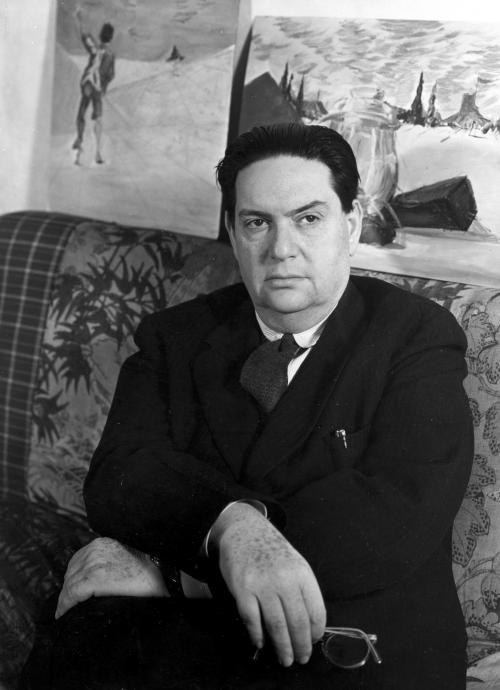Darius Milhaud, born on September 4, 1892, in Marseille, France, was destined to become one of the most influential and prolific composers of the 20th century. Growing up in Aix-en-Provence, Milhaud was surrounded by a rich cultural heritage that would later inspire his diverse musical creations. His Jewish background and the vibrant Provençal culture played significant roles in shaping his artistic sensibilities.
From an early age, Milhaud displayed an exceptional aptitude for music. He began his formal musical education at the Paris Conservatoire in 1909, where he studied under masters such as Charles-Marie Widor and Vincent d’Indy. It was during this time that Milhaud’s unique compositional voice began to emerge, characterized by a bold approach to harmony and rhythm.
The Brazilian Influence
One of the most transformative periods in Milhaud’s life came in 1917 when he traveled to Brazil as a cultural attaché to the French ambassador Paul Claudel. This two-year sojourn had a profound impact on his musical style. The vibrant rhythms and melodies of Brazilian popular music, particularly the samba, infused Milhaud’s compositions with a new vitality and exoticism.
The influence of Brazilian music is perhaps most evident in one of Milhaud’s most famous works, “Le Bœuf sur le Toit” (The Ox on the Roof), composed in 1919. This piece, originally conceived as accompaniment for a Charlie Chaplin film, became a ballet and later a popular concert work. Its lively rhythms and colorful orchestration exemplify Milhaud’s ability to blend diverse musical influences into a cohesive and engaging whole.
Les Six and Polytonality
Upon his return to France, Milhaud became associated with a group of young composers known as “Les Six.” This informal collective, which included Francis Poulenc and Arthur Honegger, sought to break away from the heavy romanticism and impressionism that dominated French music at the time. Milhaud’s contributions to this movement were characterized by a light, often irreverent style that incorporated elements of popular music and jazz.
One of Milhaud’s most significant contributions to 20th-century music was his development of polytonality – the simultaneous use of multiple keys or tonal centers. This technique is prominently featured in works such as his 1923 ballet “La Création du Monde” (The Creation of the World), which also showcases his fascination with jazz. The piece, inspired by African creation myths, was one of the first classical works to incorporate jazz elements on a large scale.
Prolific Output and Diverse Genres
Milhaud’s oeuvre is remarkable not only for its stylistic diversity but also for its sheer volume. He composed over 400 works across virtually every musical genre, including operas, ballets, symphonies, concertos, chamber music, and vocal works. This prolific output is a testament to his boundless creativity and tireless work ethic.
Among his most celebrated works are the opera “Christophe Colomb” (1928), which employs innovative staging techniques and a complex musical structure, and the suite “Saudades do Brasil” (1920-21), a collection of dance-inspired pieces that reflect his time in Brazil. His string quartets, numbering 18 in total, are considered significant contributions to the chamber music repertoire of the 20th century.
Teaching Career and Later Years
Milhaud’s influence extended beyond his compositions to his role as an educator. He taught at Mills College in California from 1940 to 1971, alternating with periods of teaching at the Paris Conservatoire. His students included notable composers such as Steve Reich, Burt Bacharach, and Dave Brubeck, further extending his impact on the musical world.
Despite suffering from rheumatoid arthritis, which confined him to a wheelchair in his later years, Milhaud continued to compose and teach with undiminished enthusiasm. His autobiography, “Notes Without Music” (1949), provides valuable insights into his life and creative process.
Famous Works
While Milhaud’s output was vast, several works stand out as particularly significant:
“Le Bœuf sur le Toit” (1919)
This lively and humorous ballet, infused with Brazilian rhythms, became one of Milhaud’s most popular and enduring works.
“La Création du Monde” (1923)
A groundbreaking ballet that incorporated jazz elements into a classical framework, inspired by African creation myths.
“Saudades do Brasil” (1920-21)
A suite of twelve dances for piano, later orchestrated, that vividly captures the composer’s experiences in Brazil.
“Le Pauvre Matelot” (1926)
A short opera that showcases Milhaud’s skill in dramatic composition and his ability to blend tragedy with irony.
String Quartet No. 14 (1949)
One of Milhaud’s most acclaimed chamber works, demonstrating his mastery of the genre and his innovative harmonic language.
Legacy and Influence
Darius Milhaud passed away on June 22, 1974, in Geneva, Switzerland, leaving behind a rich musical legacy. His innovative approach to composition, particularly his use of polytonality and incorporation of jazz and popular music elements, had a profound influence on the course of 20th-century music.
Milhaud’s work challenged conventional notions of harmony and tonality, paving the way for future generations of composers to explore new sonic territories. His ability to blend diverse musical influences – from Brazilian folk music to American jazz – into a coherent and distinctive style exemplifies the cosmopolitan spirit of modernism.
Conclusion
Darius Milhaud‘s contributions to 20th-century music are immeasurable. His exploration of polytonality, integration of diverse musical influences, and prolific output across multiple genres cement his place as one of the most important composers of his era. Milhaud’s music continues to be performed and studied worldwide, a testament to its enduring appeal and significance.
As we reflect on Milhaud’s legacy, we are reminded of his unique ability to synthesize disparate musical elements into a coherent and distinctive style. His work embodies the spirit of innovation and cultural exchange that characterized much of 20th-century art. Darius Milhaud’s life and music serve as an inspiration to composers and music lovers alike, encouraging us to embrace diversity, challenge conventions, and continually seek new forms of musical expression.

